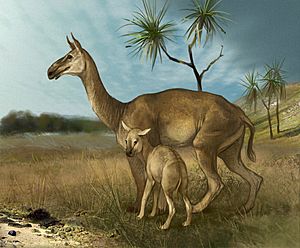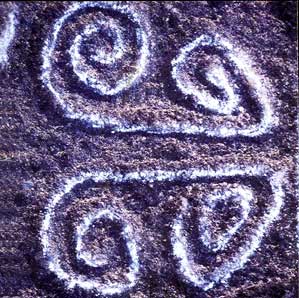Taima-Taima facts for kids
Taima-Taima is a very old archaeological site in Venezuela. It is located about 20 kilometers east of Santa Ana de Coro, in the Falcón State. People first lived at Taima-Taima around 14,000 years ago. This makes it one of the oldest known places where humans lived in South America.
Contents
Discovering Taima-Taima's Past
This important site was first studied in 1964. Researchers like José Cruxent, Alan Bryan, and Ruth Gruhn helped uncover its secrets. They wanted to learn about the very first people who lived in this area.
Early Human Life in Taima-Taima
The oldest signs of humans at Taima-Taima date back 14,200 to 12,980 years ago. This shows that people arrived in South America much earlier than many scientists once thought. It is a "pre-Clovis" site, meaning people were here before the Clovis culture in North America.
Researchers found a bone from a Notiomastodon, which was a huge, ancient elephant-like animal. This bone had a stone spearpoint stuck in it! This discovery, dated to about 13,000 years ago, proves that early humans hunted these large animals.
Ancient Animals of Taima-Taima

Scientists also found fossils of Xenorhinotherium at Taima-Taima. This was an extinct animal that looked a bit like a camel. These fossils are from the Pleistocene Epoch, also known as the Ice Age. Similar animal fossils have been found in other parts of Venezuela and Brazil.
El Jobo Spearpoints
José Cruxent made another big discovery at Taima-Taima: special stone tools called El Jobo projectile points. These are like the tips of spears or arrows. They are thought to be the oldest tools of their kind in South America, dating back 16,000 years. This was a huge find for understanding early people in the Americas.
What Were El Jobo Points Used For?
El Jobo points were found mostly in northwestern Venezuela. People who used these points were hunter-gatherers. This means they hunted animals for food and gathered plants. The points were probably used to hunt large mammals.
Scientists have grouped these tools into different types based on how old they are. The "El Jobo" type of tool was used between 16,000 and 9,000 years ago.
See also
 In Spanish: Taima Taima para niños
In Spanish: Taima Taima para niños


